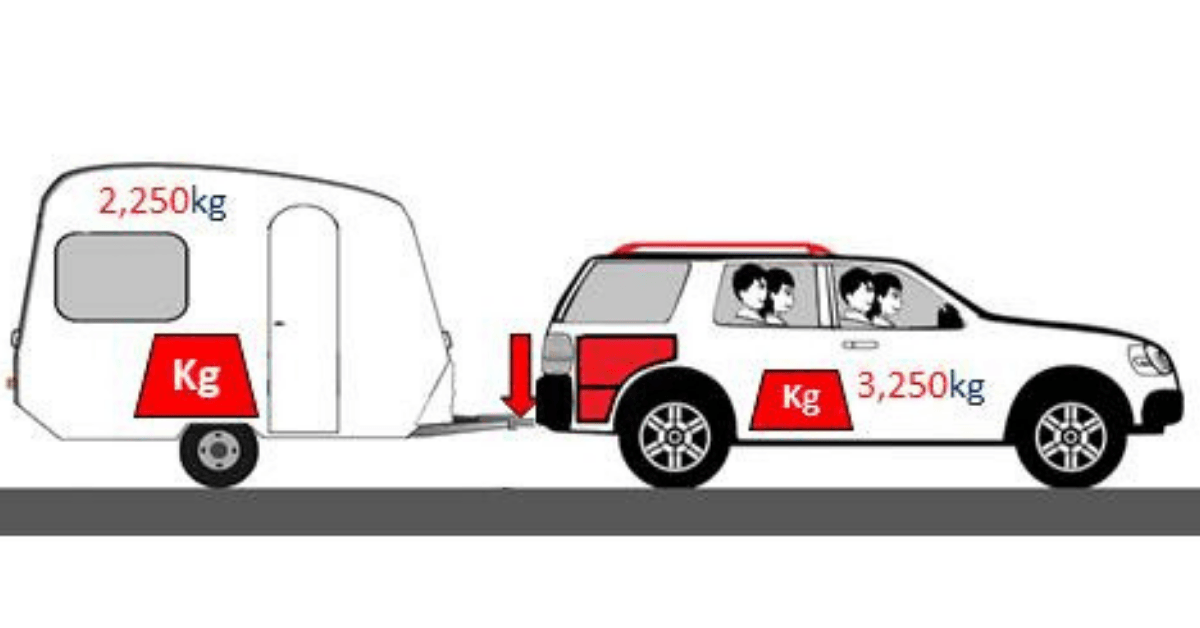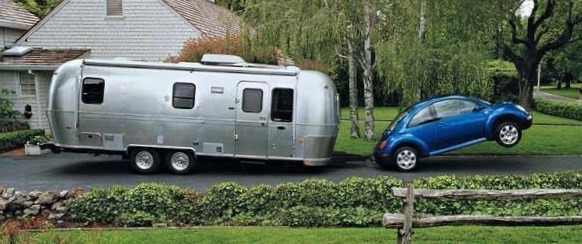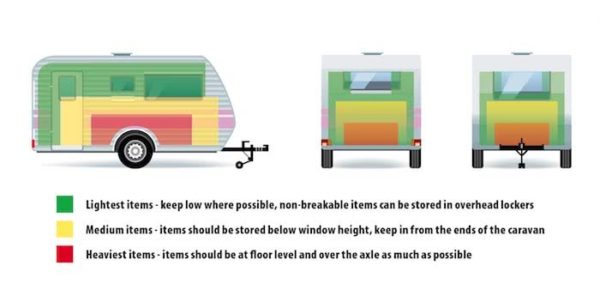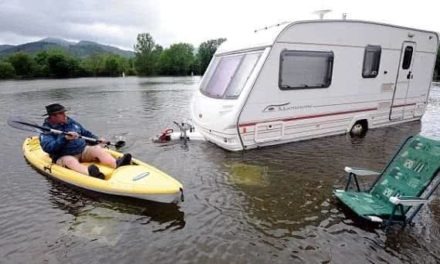Disclosure: When you click on links to various merchants on this site and make a purchase, this can result in this site earning a commission. Affiliate programs and affiliations include, but are not limited to, the eBay Partner Network
I was driving behind another caravan, and it got me wondering: what makes a caravan sway… and how do I stop my caravan from swaying?
So I did some research and here’s what I found: It’s not one thing that makes a caravan sway. It’s usually a combination of factors. There are things outside of your control (like wind), but there are things that you can change. These include: tow ball weight, load distribution, speed, and tyre pressure.
So if they’re what makes a caravan sway, here’s how you can stop it:
1. Make sure your tow ball weight isn’t too light
When your caravan is hitched up, some of it’s weight is transferred onto your tow vehicle through the tow ball.
This tow ball weight is known as tow ball download… and if it’s too light then it can make your caravan sway.
As a rule of thumb your caravan‘s tow ball weight should be about 10% of its total weight (Aggregate Trailer Mass).
Now, depending on the source that you read the tolerance may vary:
Some say between 7 to 14%. Others 8 to 12%.

Also:
Check your compliance plate.
This might tell you the tow ball weight, but bear in mind it may be giving you 1 of 3 different options:
- Recommended tow ball weight
- Maximum total weight, or
- Tare tow ball weight (how much it weighs when you’re van’s empty)
If you don’t know your toe ball weight, then read: How To Work Out Caravan Tow Ball Weight [3 Options]
If your tow ball weight is too light… want to know how to fix it?
The answer is (proper) weight distribution..
2. Distribute most of your weight over the axles, then the front, then the rear
Some people start with a tow ball weight that is too heavy.
This can be because of either:
- Trying to offset too much weight on the A-frame, or
- A caravan that isn’t suitable for the tow vehicle
One of the worst things you can do to try to lighten your tow ball weight is to move weight to the rear of your caravan.
This can quickly cause the pendulum effect… and lead to severe caravan swaying, snaking, or rolling over.
You can’t fix this:

By doing this:

If you do, this will happen:
To find out more, check out our article: 7 Tips to Properly Load a Caravan For Towing
3. Tow with your caravan tanks full
Now you don’t always need to tow with your caravan tanks full…
…but it may help.
Especially if you need to off-set your caravan’s high centre of gravity
(for example: you have a big air conditioner on the roof).

Full tanks can help stop your caravan from swaying for two reasons:
- A bigger proportion of the weight is down low so it lowers your caravan’s centre of gravity, and
- It increases the proportion of weight that’s over your axles.
Befoe you resort to this there’s a few things to remember:
- You might be getting close to being over-weight already
- Filling water tanks shouldn’t be a substitute for poor loading in the first place
- Depending on where the tanks are located it may have a big impact on your tow ball weight
To learn more about how this can help stop a caravan from swaying, check out: Should You Tow a Caravan With Full Water Tanks?
4. Select the correct tyre pressure based on how you’re loaded
What is the best tire pressure for towing a caravan?
Well it depends on your tyres… As well as both how much weight you’re carrying (and how it’s loaded).
[Two caravans of the exact same make and model may need different tire pressures]
If your tire pressures are too high you’re in for a bouncy ride. You’ll wear out the centre of your tyres more quickly.
But most importantly?
You’ll sway more. And, you can lose traction.
So if you want to stop your caravan from swaying, use a chart that takes into consideration load.
Or learn the 4 psi rule.
Check out: What Caravan Tyre Pressure Should I Use? [A Simple Explanation]
5. Reducing your speed is guaranteed to stop your caravan from swaying
One of the biggest things that makes a caravan sway is speed.
Think about it:
If you’re only doing 30 km/h, your caravan will not sway.
No matter how poorly you’re loaded.
But when you get to higher speeds, your caravan is more likely to sway.
Not only that, it’s harder to get back under control.
[And the results are much worse].
In this article about caravan rollovers, it’s noted that:
“Excess speed (for that particular rig) is almost always involved. The tow vehicle and trailer is usually travelling at high speed when a roll over happens, often in association with overtaking another vehicle, or being overtaken.”
When you pass (or are getting passed) by another vehicle it’s effectively like having a sudden side wind.
So remember:
The speed limit is the limit, not the target.
Now, I’m not saying sit on 70 km/h and hold up everyone on the highway…
…but drive to conditions.
6. Consider fitting Electronic Stability Control (ESC)
Electronic Stability Control (ESC) essentially acts like an independent braking system. It detects when your van is starting to sway. The good ones will brake one wheel at a time to help bring your van back under control.
Now there’s 2 schools of thought here:
- ESC is like a bandaid… if you load your caravan correctly and don’t speed, you shouldn’t need it.
- ESC is like an insurance policy… if you only need it once, it’s totally worth it.
I subscribe to the 2nd view.
It’s not that I believe in driving at 110 km/h with a Jerry can and a spare tyre hanging off the back of my van.
Far from it.
But… all it takes is needing to swerve to avoid an accident. Or there being a sudden side wind.
It’s not cheap. To have ESC fitted can cost $1,300 – $1,400.
If you don’t get ESC, that’s all good, just take the time to understand what makes a caravan sway.
Summary:
What makes a caravan sway is usually a combination of things.
Put simply, it’s a combination of speed, loading, and tyre pressure.
The good thing is that all of these factors are under your control.



![What Caravan Tyre Pressure Should I Use? [A Simple Explanation]](https://abigpeacheyadventure.com.au/wp-content/uploads/2019/09/What-Caravan-Tyre-Pressure-Should-I-Use-440x264.jpg)

if your vehicle is fitted with ESC will that assist your van when it starts swaying?
or do you have to put ESC on your van?
Hey Don, the caravan ESC is the one that’s needed. Cheers, Michael